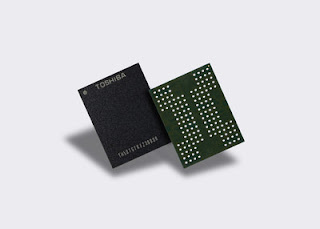By Nick Flaherty
www.flaherty.co.uk
STMicroelectronics has pitched a tiny balun alongside its entry level Bluetooth 5 chip to target connected devices.
The
BlueNRG-2 chip uses Bluetooth Low energy and includes an 'ultra-frugal' standby mode of 500nA. The high RF signal strength saves system power by ensuring reliable wireless communication, and 256Kbytes of on-chip flash memory for BLE software and application code and 24 KB of static RAM memory with retention in two 12 KB banks saves external memory components.
BlueNRG-2 is Bluetooth 5.0-certified, which ensures interoperability with the latest generation of smartphones, and supports security, privacy, and extended packet length for faster data transfer.
ST has also developed a dedicated ultra-miniature balun (
BALF-NRG-02D3) for its BlueNRG devices. Integrating a matching network and harmonics filter, the enhanced balun simplifies RF complexity and provides optimized link budget in a less than 1.2 mm² footprint. Designed on non-conductive glass substrate, it offers low dispersion over temperature. This would be combined with a planned chip scale package for the BlueNRG-2 measuring just 2.6mm x 2.7mm for a compact Bluetooth 5 design. This compares to the 2.5mm square size of
the Swatch Bluetooth 5 device.

“The BlueNRG-2 ushers in an era of connected smart things all around us, enabling secure, reliable and energy-efficient interaction with any object, like a toothbrush or lighting switch, from our mobile devices,”said Benedetto Vigna, Executive Vice President, Analog and MEMS Group General Managerat ST. “Moreover, the objects can benefit from simple construction, fully sealed if necessary, and yet fully interoperable through natural voice control or the feature-rich and stylish user interface of an Android or iOS smart application.”
A comprehensive Software Development Kit (SDK) is available, featuring the BlueNRG Navigator Graphical User Interface (GUI), which makes it extremely easy for designers and innovators to create the next generation of connected devices with the BlueNRG-2 chip and realize the vision for a smarter environment.
The chip uses the ARM Cortex-M0 core with cryptographic processing, power management, clock management, and up to 256KB of Flash memory giving extra flexibility to handle code and data storage. Multiple power-saving modes, including standby mode drawing just 0.5µA, help meet functional requirements with a minimal power budget. The integrated BLE radio with +8dBm RF output power maximizes communication range and saves overall energy consumption by avoiding data errors and retries. The device is specified for operation up to 105°C, allowing use in a wide range of scenarios including automotive environments.
An integrated 2-channel, 10-bit analogue-to-digital converter (ADC) provides a convenient interface for analogue front-end transducers, and a Pulse Digital Modulation (PDM) interface simplifies connecting a digital MEMS microphone for natural-speech voice-controlled applications. The increased memory size and the high-efficiency core architecture allows running ST Open.MEMS libraries with low impact on the overall power consumption. The sensors and libraries, together, enable developers to implement advanced capabilities such as gesture recognition and activity tracking.
 |
| BlueNRG-2 architecture for Bluetooth 5 |
The BlueNRG Navigator GUI simplifies and streamlines device configuration, setup and testing, and enables makers or developers to quickly get started and implement new ideas for smart devices without requiring any specific RF or BLE skills. The intuitive graphical interface enables users to become productive in just a few hours. Application examples, code snippets, and versatile tool support allows coding to begin quickly using the BlueNRG-2 Evaluation Kit.
This Evaluation Kit (STEVAL-IDB008V1) contains MEMS sensors, LEDs, push-buttons, and programming interfacing to run the provided demonstration software out-of-the-box. An Arduino-compatible connector is also featured on-board, which allows development of more complex applications by adding extra expansion boards.
BlueNRG-2 is available now, in a 32-pin QFN. Further options will be introduced later in the year, offering more GPIO in a 48-pin QFN and a 2.6mm x 2.7mm WLCSP chip-scale package. Pricing for the BlueNRG-232 in the QFN package is $1.95 for orders of 1000 pieces. The SDK can be downloaded free of charge from
www.st.com/stsw-bluenrg1-dk-pr
Related stories:








